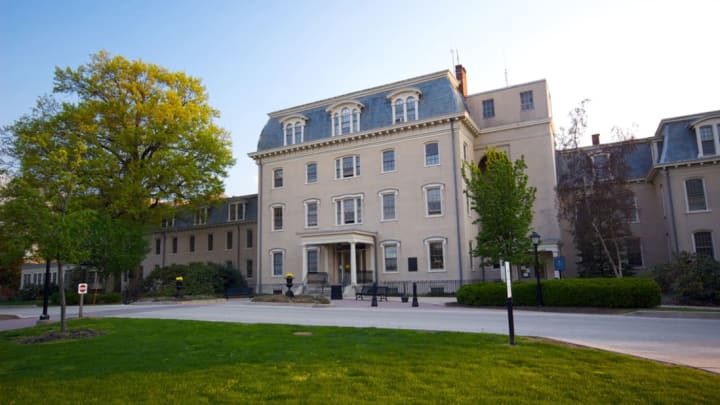Two centuries ago, people with mental illnesses were viewed as socially deviant and even possessed. Often incarcerated, homeless, or otherwise cast out, there was little sympathy—let alone medical treatment—for people suffering from depression, mood disorders, or other psychiatric conditions.
But in Pennsylvania, people dealing with mental illness could find help at the Asylum for the Relief of Persons Deprived of the Use of Their Reason, or the Friends Hospital, which opened its doors May 15, 1817. Although the name of America’s first private mental hospital wasn’t exactly sensitive (at least by today’s standards), the “friends” part was real—it was a reference to the Quakers, also known as the Religious Society of Friends.
Quakers had a different perspective on people with mental illness. The Quaker religion recognizes what they call the Inner Light—a divine spirit that they believe inhabits every person, sick or well. As a result, people are seen as deserving of dignity no matter what their mental health condition. After all, Quakers themselves knew what it was like to be treated as outcasts: After fleeing England for the sake of religious freedom, they faced persecution from Puritan colonists who saw them as threats to the social order. Only after William Penn founded his own colony—Pennsylvania—in 1681 did Quakers find a place of their own.
But mental illness affected the tight-knit Quaker community in both America and England. In the 1790s, a young Quaker woman named Hannah Mills was placed in a York, England lunatic asylum and died soon after. Appalled by her treatment, her fellow Quakers decided to set up an asylum of their own in York, one that was run on Quaker principles and that would treat people with mental illnesses “as much in the manner of a rational being as the state of his mind will possibly allow," according to an early history of the asylum.
The York Retreat, as it was called, was an inspiration to an American Quaker minister named Thomas Scattergood, who was no stranger to depression. He decided to call for a similar institution in Philadelphia, and in 1813, local Quakers organized the Asylum for the Relief of Persons Deprived of the Use of Their Reason.
Philadelphia already had a lunatic asylum—the country’s first hospital, which cared for the physically sick as well as those suffering from mental illness. But the Pennsylvania Hospital was crowded, and even though it was a pioneer of psychiatric treatment in that it saw mental illness as a disease, mental patients were often treated as curiosities. Visitors could pay money for a glimpse of the “lunaticks” inside, turning both their suffering and their treatment into entertainment.
The new asylum was different. Instead of putting patients on display or dishing out corporal punishment, it offered what Quakers called “moral treatment.” Patients lived in bright, airy rooms and the windows’ iron bars were disguised as wood. Caretakers treated patients as calmly and respectfully as possible and practiced early forms of talk and occupational therapy. Patients helped run the farm and participated in leisure activities. The hospital’s mission statement focused on both body and mind, pledging to provide patients the “requisite medical aid, [and] such tender, sympathetic attention as may soothe their agitated minds, and under the Divine Blessing, facilitate their recovery.”
Its philosophies were ahead of its time, but the hospital’s practices also reflected the medical beliefs of its era. Freezing shower baths, “blisters” designed to swell the skin and distract patients, and bleeding—common treatments for physical ailments among patients without mental illness—were used at the hospital, too [PDF]. But by treating its patients as humans, not inmates, the hospital set a new standard for psychiatric care.
As the years passed, the hospital began to admit non-Quaker patients and even incorporated pet therapy and a gym. Today, the hospital treats adolescents, adults, and seniors and includes a long-term residential program designed to give patients access to permanent housing and psychiatric resources without confining them to the hospital.
The hospital now admits over 5000 patients per year. It’s dropped its old-fashioned name, but it’s still run by Quakers, and the stately Scattergood Hall—a National Historic Landmark—is the first thing new patients see as they’re welcomed to the hospital. The hospital’s 1813 mission statement is still in effect, too. The definition of “tender, sympathetic attention” for people with mental illness may have shifted, but the purpose of America’s first private mental hospital has not.
